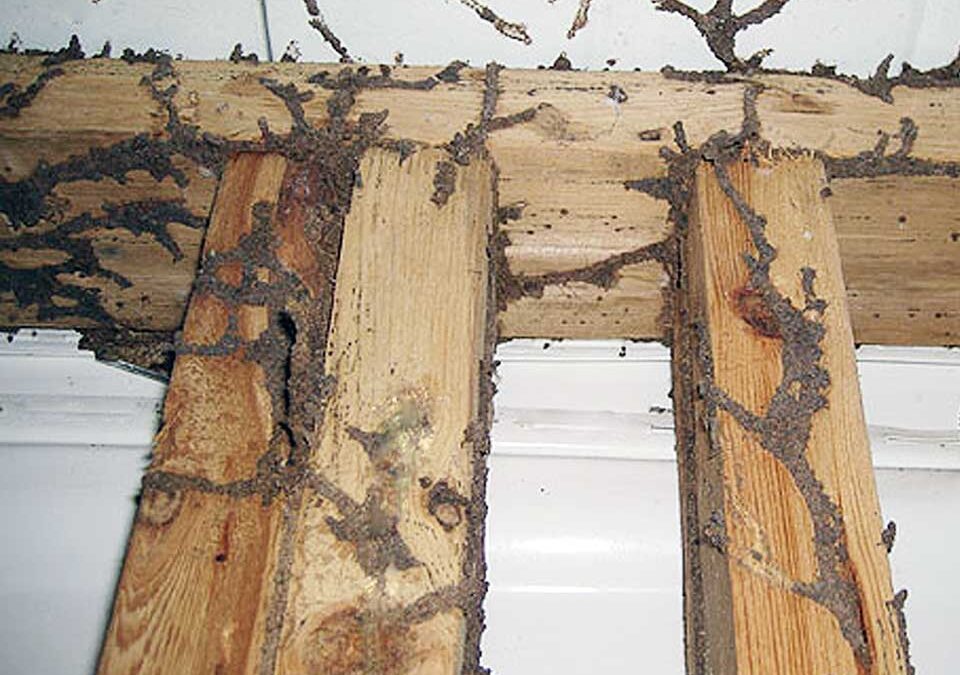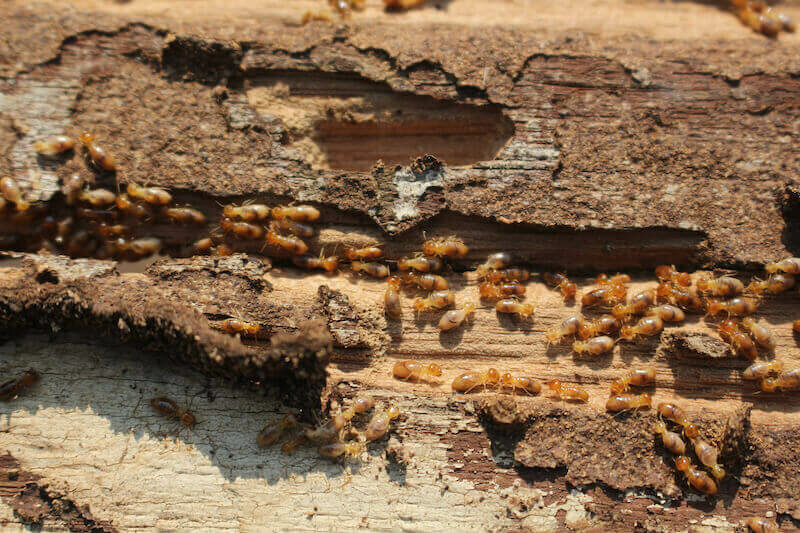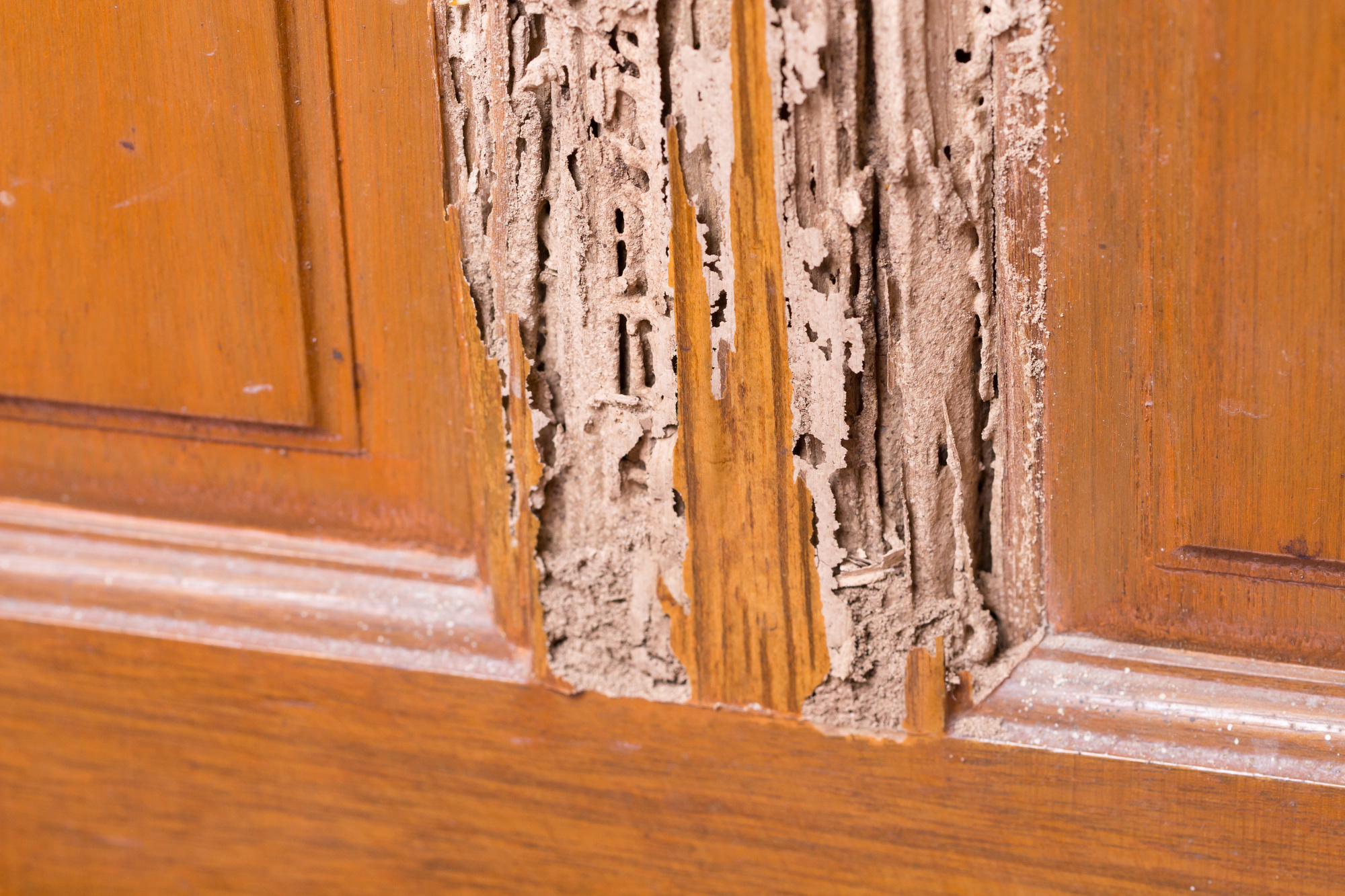Termite Treatments in Florida
Exterminator Services for Saint Petersburg, Pinellas Park, Bay Pines, Seminole, Indian Rocks Beach
Termites can cause significant structural damage if allowed to spread unchecked, and Florida’s subtropical weather makes it an ideal habitat for these wood destroying insects. Whether you own a single family home in Saint Petersburg or manage properties in Pinellas Park, Bay Pines, Seminole, or Indian Rocks Beach, acting quickly at the first sign of termites protects both finances and peace of mind. Below, you will see why termites flourish in Florida, warning signs to watch for, and why seeking termite treatments in Florida with a trusted termite exterminator is crucial. You will also discover the typical methods used to eliminate termite colonies and how to prevent these pests from returning.
Why Termites Are an Ongoing Concern in Florida
Florida’s warm temperatures and humidity give termites the moisture and heat they need to remain active year round. In cooler regions, extended winters help reduce or slow termite behavior. By contrast, Florida’s mild climate means termites can forage, breed, and expand colonies almost continuously, especially in areas near coastal breezes or frequent rainfall.
Subterranean termites burrow in damp soil and build mud tubes to access wooden structures. Drywood termites can bypass the soil altogether, colonizing sound, dry wood deep in rafters or furniture. Dampwood termites target moist or decaying timber, often found where leaks or poor ventilation keep wood damp. Any property lacking consistent inspections or preventive maintenance could quietly harbor a termite presence until damage becomes obvious.

Common Signs of a Termite Infestation
- Mud Tubes: Subterranean termites construct pencil sized tubes on foundation walls, crawl spaces, or along support beams to stay sheltered as they move between soil and wood.
- Discarded Wings: Swarming termites shed their wings after mating flights, leaving tiny, translucent wings near windows or light sources. This often occurs in spring or during warm spells.
- Hollow Sounding Wood: Termites consume wood from the inside outward. Tapping a beam or wall that looks intact but produces a hollow echo can signal hidden tunneling.
- Frass or Pellets: Drywood termites expel small, pellet-like droppings called frass. These can accumulate under infested wood or on windowsills, resembling fine sawdust.
- Bubbling Paint or Wallpaper: If termites tunnel close to the surface, paint or wallpaper may bubble or appear distorted. People sometimes mistake this for water damage.
Any one of these clues in Saint Petersburg, Pinellas Park, Bay Pines, Seminole, or Indian Rocks Beach is a sign to consult a termite exterminator promptly. Early detection often reduces the time and cost needed to fix the damage.
How Termites Can Harm Your Property
Termites feed on cellulose, causing gradual weakening of wooden structures over time. If a colony remains undiscovered for months or years, you may face:
- Structural Weakness: Beams, joists, or support posts can lose integrity, leading to sagging floors or compromised load bearing capacity.
- Expensive Repairs: Restoring damaged framework, replacing sheetrock, or tackling mold issues often costs thousands of dollars.
- Decreased Property Value: A history of termite damage can lower a property’s market appeal, particularly if buyers worry about re infestation.
- Disruption of Routines: Larger infestations may require fumigation or extensive repairs, requiring people to vacate the premises temporarily.
Taking fast action once termites appear means treating them before they expand, saving you from more severe building work or lost property value.

Why a Termite Exterminator is Crucia
Do it yourself attempts frequently fall short against termite colonies spread across hidden cavities or deep within walls. Many over the counter products only kill visible termites, while eggs or out of reach areas stay untouched. Subterranean termites may nest yards away from a structure, connected by mud tubes, so local sprays around a foundation will not always reach the main colony.
A professional termite exterminator understands Florida’s local termite species and uses proven solutions such as soil barriers, baits, or fumigation for drywood termites. They also conduct detailed inspections and set up monitoring stations. As a result, your termite treatments in Florida address entire colonies, not just the occasional termite visible at entry points.
Our Termite Treatments in Florida
Detailed Inspection
We begin by examining areas indoors and outdoors, checking for signs like mud tubes, droppings, or wings. We also evaluate moisture levels near foundations or in attics, since dampness increases termite risks. By identifying whether you have subterranean, drywood, or another termite variety, we customize our plan accordingly.
Soil Treatments
For subterranean termites, we may apply termiticides around a home’s perimeter. This creates a protective zone that kills or repels termites trying to enter. We sometimes trench or rod the soil to ensure coverage near foundations, piers, or crawl spaces. If the property has a slab foundation, we might drill small holes to inject termiticides where termites could slip through cracks.
Baiting Stations
Subterranean termites often respond well to baiting systems. Stations placed at intervals contain cellulose material laced with slow acting toxins. Worker termites eat the bait and carry it back to the colony, eventually removing the reproductive queen and entire nest. Bait systems require periodic monitoring and replenishment for best results.
Drywood Termite Solutions
Drywood termites nest in the wood itself. If the infestation is localized, we may inject or spot treat using specialized products that penetrate galleries. For broader invasions, tent fumigation can envelop the entire structure in a lethal gas. While fumigation can be more involved, it reaches deep pockets of drywood termites that typical surface treatments cannot.
Moisture Control and Repairs
Sometimes, leaky pipes, poor drainage, or gaps in roofing sustain a termite colony by keeping wood damp. We advise fixing these issues to avoid re infesting conditions. If structural wood is compromised, partial or full replacement might be needed to restore integrity.
Follow Up
Termites can return if soil barriers degrade or if an overlooked area remains untreated. Scheduling regular inspections confirms any new termite activity is halted early. We may check bait stations, reapply treatments if needed, and verify that moisture concerns stay resolved.
Termite Challenges in Saint Petersburg
Saint Petersburg’s coastal climate and older buildings offer plenty of small cracks and damp spots for termites. Busy tourism or shipping might also import termites inadvertently. We tailor termite exterminator solutions to each structure’s layout, often blending perimeter soil treatment with interior spot checks. Roof leaks or old plumbing lines can prompt subterranean or even dampwood termite attractions, so ensuring those fixes is critical for the property’s termite free status.
Pinellas Park, Bay Pines, Seminole, Indian Rocks Beach
These communities all experience mild winters and periods of high humidity. Pinellas Park’s commercial and residential mix means termites can move between properties if expansions go unnoticed. Bay Pines, near water, may deal with high ground moisture. Seminole’s suburban settings and Indian Rocks Beach’s coastal vibe can also see frequent termite swarms, especially after rainfall or in spring months. Our termite treatments in Florida for these areas include thorough inspections inside attics or crawl spaces, placing baits around yard perimeters, or scheduling fumigation if drywood termite invasions run large. By removing conducive moisture sources and sealing cracks, we keep new termite colonies from finding entry.

Preventive Measures for Termites
While no approach guarantees zero termites, some habits reduce risk:
- Limit Wood to Soil Contact: Keep wooden beams, posts, or stored lumber raised above ground. Store firewood away from the main building.
- Maintain Good Drainage: Ensure gutters and downspouts direct water away from foundations. Fix leaks in hoses or outdoor spigots.
- Ventilate Crawl or Attic Spaces: Damp conditions encourage subterranean or dampwood termites. Adequate airflow helps dry the area.
- Seal Cracks or Gaps: Inspect siding, roof joints, and window frames for small openings. Use caulk or weatherstripping to block termite entry routes.
- Schedule Annual Inspections: Even if you see no evidence of termites, professional checks can detect hidden infestations early.
Contact Us to Defend Your Property
If you suspect a termite problem, do not ignore it. Contact us to learn more or schedule your service. Our termite exterminator plans in Florida use proven treatments, from soil barriers to fumigation, ensuring we eradicate existing colonies and shield your property from future ones. Whether you own a home in Saint Petersburg or manage units in Pinellas Park, Bay Pines, Seminole, or Indian Rocks Beach, early intervention saves money and stress. We craft each plan to match your structure’s design, termite species, and occupant needs.
Achieving a Termite Free Future
Florida’s climate may let termites stay active for extended periods, but prompt detection and robust termite treatments in Florida can break the infestation cycle. Relying on a termite exterminator ensures entire colonies are targeted, not just the visible foragers. By combining professional intervention with everyday maintenance like removing moisture sources and sealing potential gaps you gain lasting protection against costly structural damage. Residents of Saint Petersburg, Pinellas Park, Bay Pines, Seminole, and Indian Rocks Beach deserve peace of mind free from secretive wood munching insects. Invest in thorough inspections, follow professional advice, and keep your property safe from hidden termite threats.
